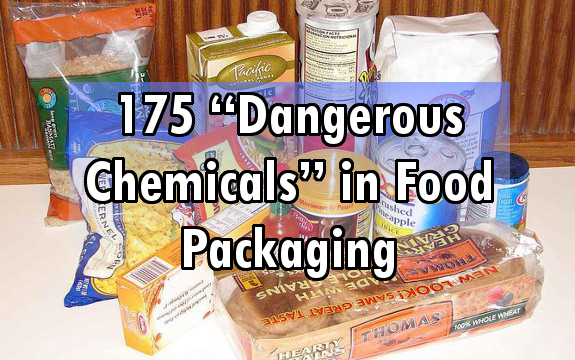175 “Dangerous Chemicals” in Food Packaging Materials


It’s not enough that we need to be concerned about what’s in our food—we also have to be concerned about what our food is in. According to a new study from the Europe, food packaging materials there contain as many as 175 dangerous chemicals. And things are not looking much better in the U.S.
The new study from the Food Packaging Forum indicates that more than 170 potentially dangerous materials are used in the packaging of food—things that have been linked to cancer, infertility, hormone disruption, and even genital defects.
“From a consumer perspective, it is certainly undesirable and also unexpected to find chemicals of concern being intentionally used in food contact materials,” said Dr. Jane Muncke, managing director of the Food Packaging Forum, according to the Daily Mail.
Many of the chemicals identified in the research don’t simply touch the food contained within, they are carried from the packaging and into the food, where they find their way into your body. There, some accumulate and cause some damage. They also pose potential dangers to the environment as they eventually find their ways into the soil and groundwater supplies.
This can be seen on a large scale with the plastic chemical BPA and similar endocrine-disrupting chemicals. While industries want you to think “BPA-Free” labels make foods safe from hormone disrupters, researchers say that this simply isn’t the case. They tested more than 450 different plastic containers from stores like Walmart and Whole Foods. More than 70% of them released estrogen-like chemicals.
Because European food safety rules don’t cover food packaging materials as stringently as they do actual food ingredients, the supply is loaded with toxins.
Counter to the study, the Food Standards Agency has moved to reassure consumers that the chemicals are present within limited amounts and are therefore nothing to be concerned about.
And of course Europe isn’t the only place with food packaging problems. It extends across the globe.
“In the US, several types of asbestos are authorised as indirect food additives for use in rubber,” wrote researchers from the Food Packaging Forum in a study last year. “While formaldehyde, another known carcinogen, is widely present at low levels in plastic bottles made of polyethylene terephthalate; formaldehyde also migrates from melamine formaldehyde tableware. Considering how widely beverages are consumed from polyethylene terephthalate soda bottles, this may amount to a significant, yet unrecognised, exposure of the population.”
We see it in bisphenol-A and it’s substitutes, phthalates and parabens. They are present in can liners, plastic food containers, wrappings, and bottles.
The best way to ensure you are not inviting these toxins into your body is to steer clear of packaged foods altogether. The alternative? Trusting the food producers and government to protect you.
